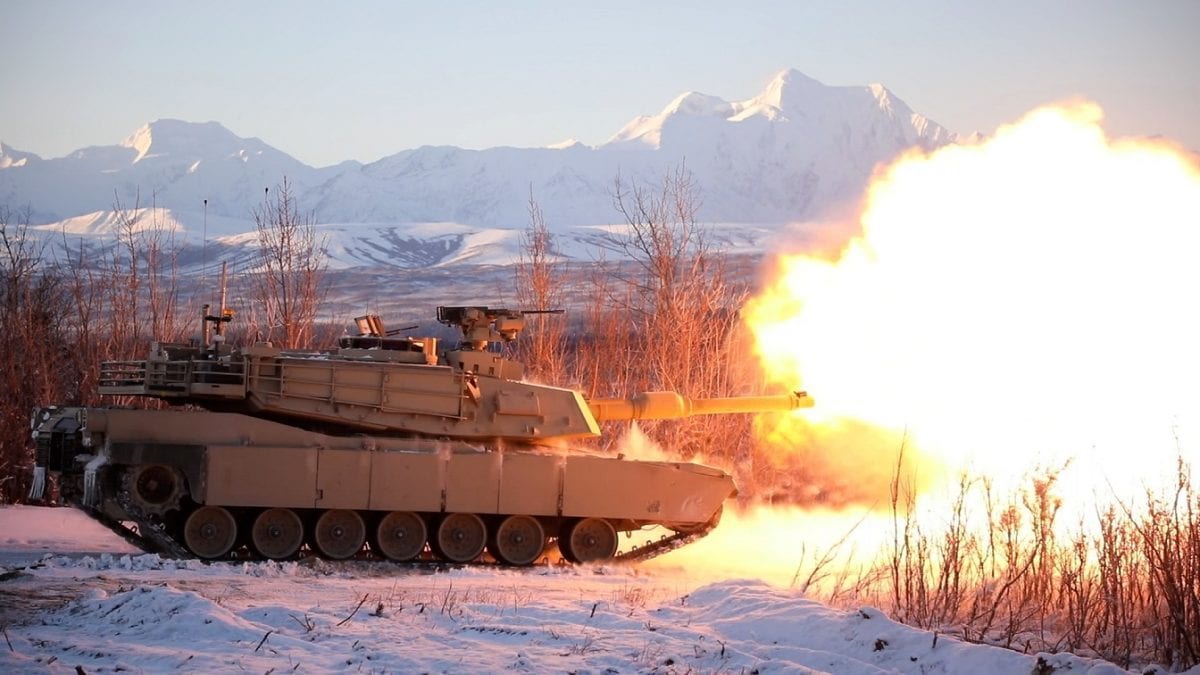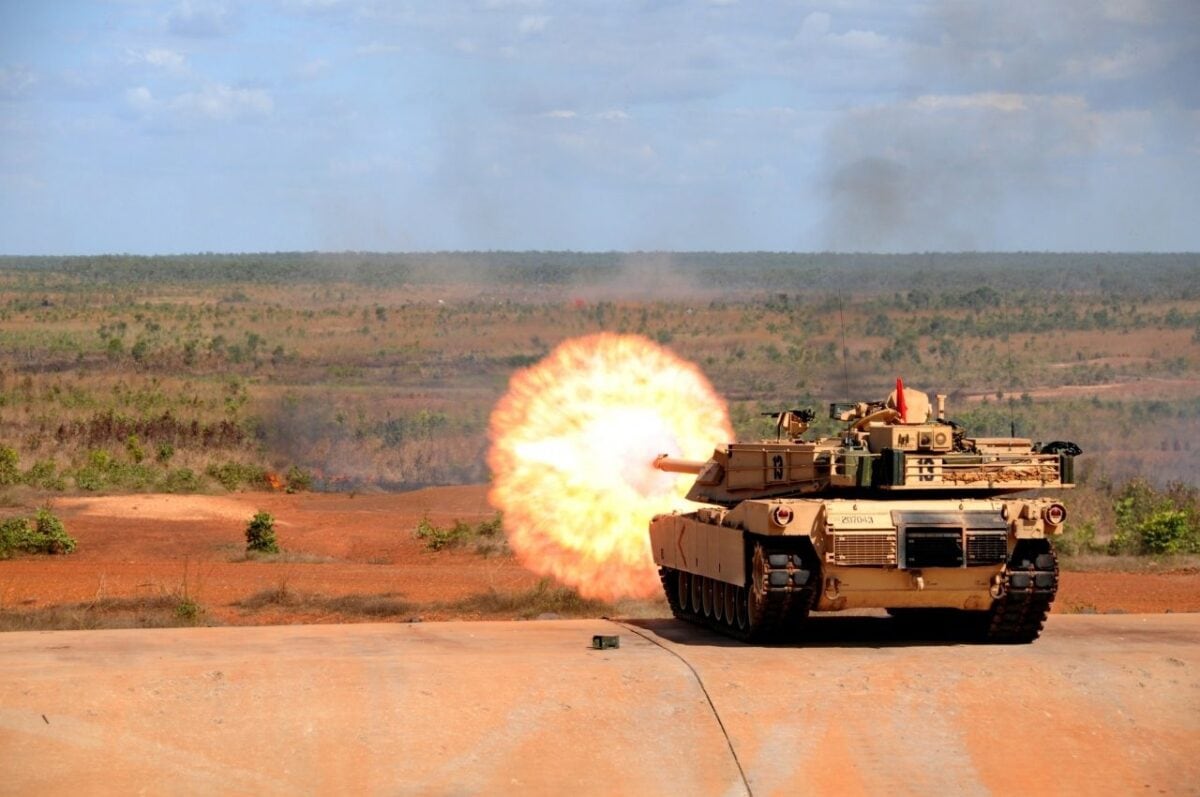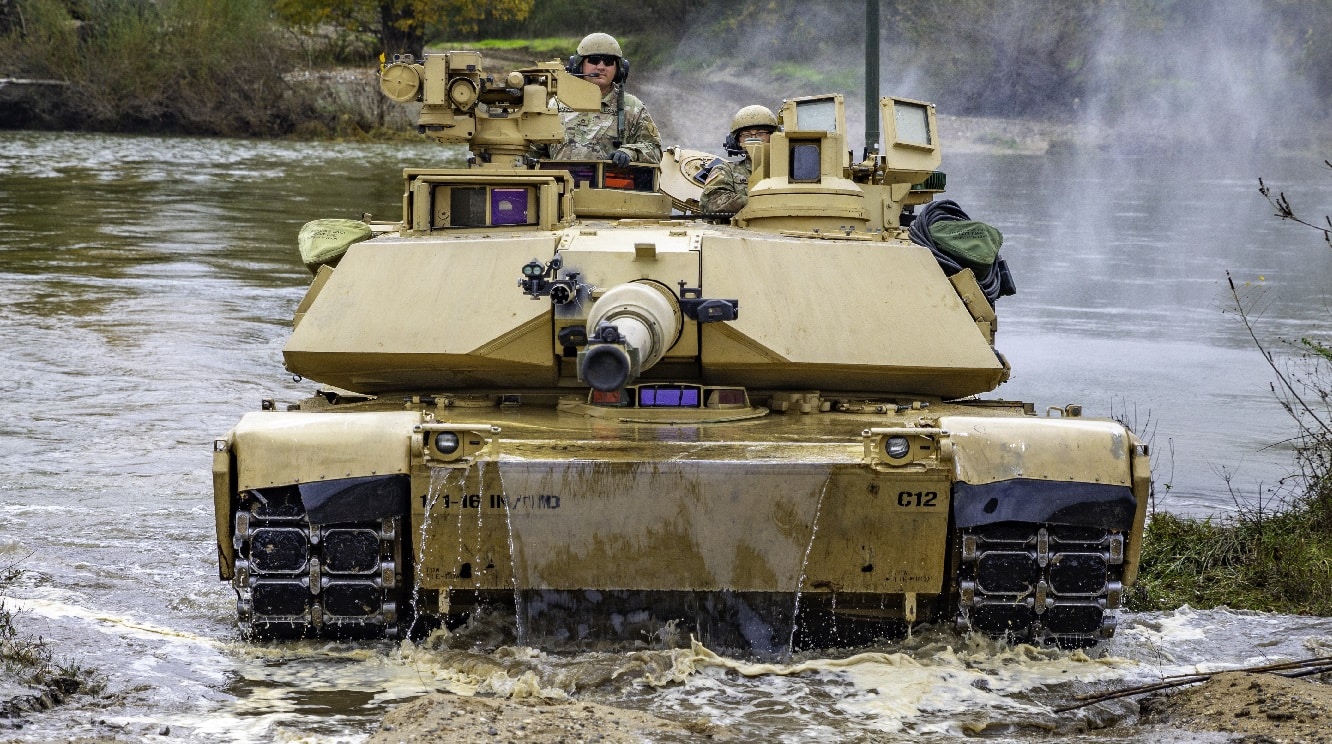After Putin first invaded Ukraine in 2014-2015, NATO began rotating contingents of international forces to Poland and the Baltic states of Estonia, Latvia, and Lithuania in an arrangement called “Enhanced Forward Presence” (eFP). The hope was to deter a hypothetical Russian surprise attack on the Baltics similar to that which had overwhelmed Kyiv’s forces in Eastern Ukraine.
Each Baltic State now has a multi-national NATO battlegroup, including a U.S. armored brigade in Poland. These troops are continually rotated so as not to violate the 1997 NATO-Russia Founding Act, in which NATO stipulated it would not permanently base extra-national combat troops in the territory of its newest members.
It was long ago acknowledged the eFP battlegroups were unlikely to withstand a full-scale Russian assault, which could be simultaneously launched from Russian territory to the east, via Russian-allied Belarus to the south, and from the Russian exclave of Kaliningrad west of the Baltics and north of Poland.
Instead, the eFPs were understood to be ‘trip-wires’ to slow down a Russian attack and make it crystal clear that any initial Russian invasion would unavoidably involve fighting and killing troops from many NATO countries, ensuring political will to mount a counterattack to expel Russian forces.
The fear was that without sacrificial trip-wires, Russia might think (likely wrongly) that it could snatch the Baltics so quickly that the rest of NATO would be cowed into backing off rather than mustering the troops for a hard fight to liberate them.
A former U.S. Army planner for the NATO battlegroup in Poland wrote to me in an email that this characterization was accurate:
“We are not supposed to say ‘Trip wire’, but that is exactly what the eFP forces are. They exist to generate the political will for an Article 5 [NATO collective defense] response to an attack. Most eFP Battle groups are about a reinforced battalion in strength, but that belies the fact that they are ad-hoc units made up of different nationalities, with different communications systems and procedures. They are much more an exercise in solidarity than a serious military threat. Now in some cases, they add a lot of punch to their host nation, but a [single] tank battalion is not going to slow down a concerted Russian attack for very long.”
For context, a typical combat battalion has around 600-1,000 soldiers, while a reinforced battalion (i.e.. with additional companies) will often range from around 1,000 to 1,500 personnel.
Compared to the four NATO battlegroups, Russia invaded Ukraine with around 120 battalion tactical groups (BTGs), though assembling that force took many months and was highly visible to NATO reconnaissance.
Russian BTGs, in theory, reinforced with extra artillery, were found to often be seriously under-manned in terms of infantry, so that two or three BTGs might equal in personnel one reinforced NATO battalion.
From tripwires to forward defense?
The Baltic states were never all that happy with the trip-wire strategy—and are even less so in the wake of the devastation left behind by Russia’s botched assault on central Ukraine.
In June, Estonian president Kaja Kallas argued that a tripwire strategy “to lose [the Baltics] and liberate it afterwards” would result in their communities and cultural heritage being “wiped off the map, including our people, our nation” based on Russia’s indiscriminate bombardment of Ukraine and atrocities in Bucha. In Ukrainian cities utterly reduced to rubble such as Mariupol and Severodonetsk, she sees the potential fates of Riga, Tallinn, and Vilnius.
Kallas would prefer NATO’s forward presence be robust enough to hold back an invasion, foregoing a Russian occupation in the first place, and argues a “forward defense” posture might better deter a Russian attack in the first place.
Recent deployments by the United States could help shift things in that very direction. As the Biden administration is substantially enhancing air, naval, and ground forces in Europe, including maintaining rotating combat brigades (each with three maneuver battalions) in both Poland and now Romania, and permanently basing the V Corps headquarters in Poland.

Since testing at U.S. Army Cold Regions Test Center, the Department of Defense’s lone extreme cold natural environment testing facility, began in January 2020, the M1A2 System Enhancement Package version 3 main battle tank was driven more than 2,000 miles in rugged conditions across three seasons of sub-Arctic weather, fired hundreds of rounds for accuracy in extreme cold, and underwent testing of its auxiliary power unit.
Though the platform was extensively tested at U.S. Army Yuma Test Center prior to being put through its paces in Alaska, the sub-zero temperatures brought forth glitches that would have been unimaginable in the desert.
That last move might sound boringly administrative, but according to the army planner, better administration could redress major weaknesses of existing eFP battle groups:
“The primary impact of having a dedicated Corp HQ is that the staff will be focused solely on the task of defending Poland and the Baltics from a Russian attack. The current situation puts the eFP Battle groups and their constituent forces under multiple independent chains of command, including their own chains (in the case of US Army forces: EUCOM), the host nation (eFP Poland nominally fell under 15th Mechanized Brigade), and whatever NATO Multi-National Division (MND) they are geographically aligned with.
“All of those HQs are involved with a vast number of tasks ancillary or completely unrelated to the actual defense of NATO/Europe. V Corps will develop operational and training plans for US rotational forces, and assuming a close working relationship with MND HQs, for the eFP forces as a whole.”
For example, more reliable communications could ensure the units are more likely to receive air, artillery, electronic warfare, and air defense support on day one of war instead of being forced to improvise arrangements while under enemy fire and inundated with communications jamming.
A more effective Day One defense could buy additional hours needed to rush other high-readiness forces to the battlespace, such as the U.S.’s Immediate Response Force—an airborne brigade from the 82nd Airborne Division capable of deploying one battalion anywhere within 18 hours, shortly followed by additional battalions. NATO also maintains a rotating Very High Readiness Joint Task Force (VHRJTF) that could deploy a brigade and support elements within 48 hours.
The U.S. also has huge stocks of vehicles and weapons pre-positioned in Europe. That means the Pentagon could deploy heavier armored units by flying over personnel to man pre-positioned equipment without having to wait weeks for heavy equipment to arrive by sea.
The Army planner wrote to me: “The maintenance levels [of pre-positioned stocks] are tracked very closely and are a major factor in the readiness level of U.S. forces to respond to contingencies in Europe. The equipment is similar to the vehicles and equipment used by U.S.-based units, and could be put into service rapidly. The National Training Center rotations that U.S. armored brigades conduct every few years at Ft. Irwin stress this procedure heavily, focusing on rapid force generation just as much as they do the tactical aspect of the simulation [i.e. fighting enemy forces].”
By his assessment, U.S. armored brigades could be combat-ready in Europe within a week of receiving a deployment order.
That might seem too late for the Baltics, but may not be bearing in mind how time-consuming, and highly visible, a large Russian military buildup would be. Realistically, Russia could only hope to achieve surprise in the Baltics mostly using troops already based in the region; or it would have to spend months engaging in a buildup NATO could see coming well in advance.

Image: DoD Flickr.
“Of course, large national armies no longer enjoy the luxury of surprise when invading their neighbors,” the planner commented, “so I would expect our build-up of forces within a NATO partner to match pace with the threat.”
However, catalyzing more effective command and control and defensive strategy in NATO forces in Eastern Europe will not be easy, the Army planner wrote to me:
“V Corps will have its work cut out for it both integrating the eFPs into the National Defense plans of their host nations, and standardizing solutions for the interoperability issues that the Battlegroups face.
“I do not want to sound overly harsh, the eFPs and rotational brigades are a serious combat multiplier for NATO and the US. The only thing more lethal than a U.S. soldier is a U.S. soldier that has trained with our allies. I think this latest addition to U.S. forces in Europe is a major step in the right direction for future stability on the continent.”
Sébastien Roblin writes on the technical, historical, and political aspects of international security and conflict for publications including The National Interest, NBC News, Forbes.com, War is Boring and 19FortyFive, where he is Defense-in-Depth editor. He holds a Master’s degree from Georgetown University and served with the Peace Corps in China. You can follow his articles on Twitter.

